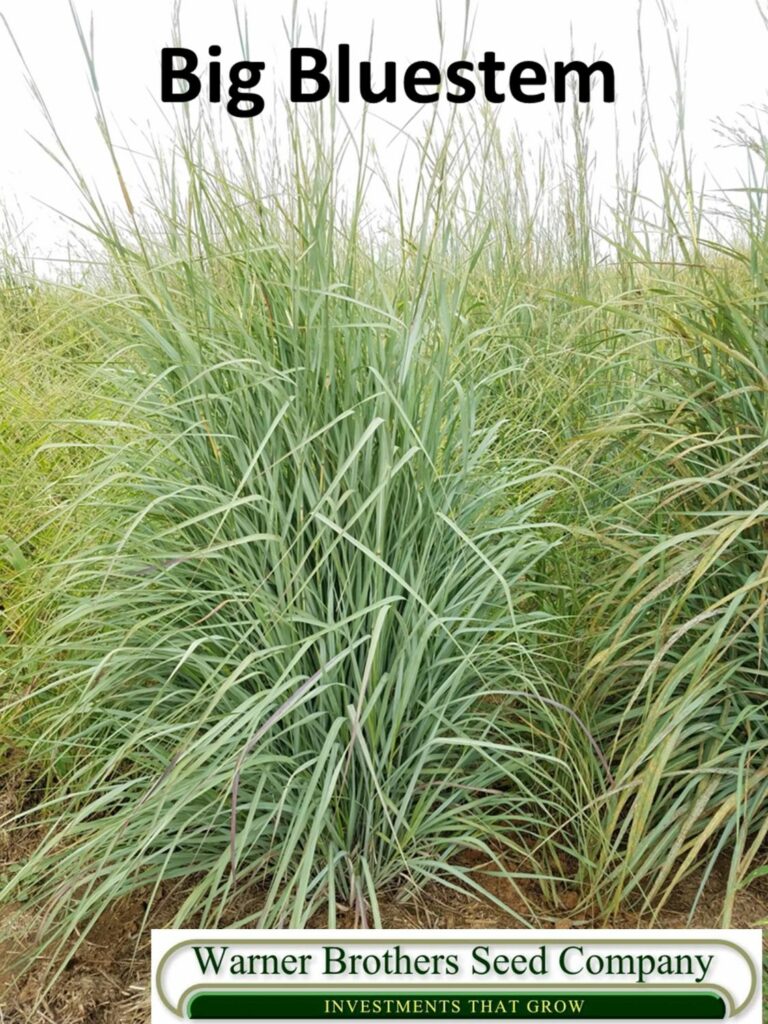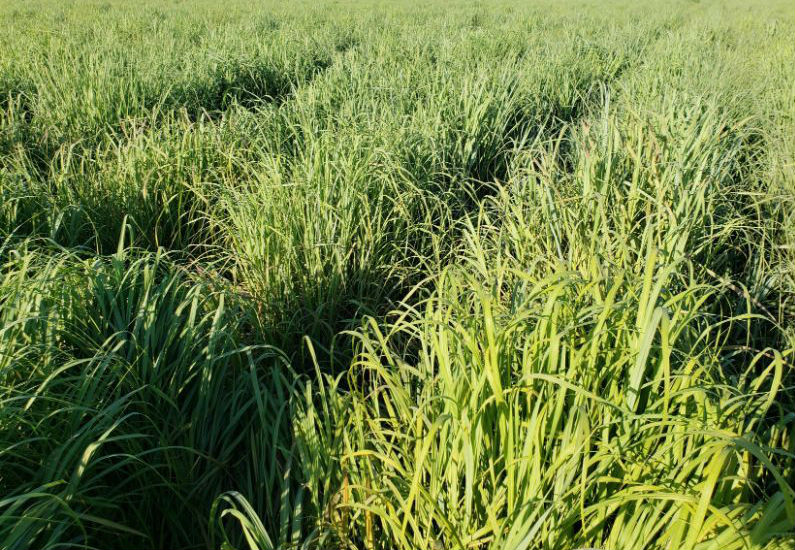Big Bluestem
(Andropogon gerardi)
Big Bluestem is a vigorous, tall, perennial, native bunchgrass with rhizomatous characteristics. It is widely adapted throughout most of the United States. Its major area of distribution is in the tallgrass prairie in the Central States and the Eastern edge of the Great Plains. The grass grows well on most soil types but performs best on moist, fertile, loamy type soils.

General Characteristics
| Growth Type: | Bunch |
| Life Span: | Perennial |
| Growing Season: | Warm Season |
| Native/Introduced: | Native |
| Plant Height: | 4-6 feet |
| Cold Tolerance: | Good |
| Drought Tolerance: | Good |
| Salt Tolerance: | Poor |
| Soil Type: | Loam - Clay |
| Minimum Rainfall: | 25 inches |
| Planting Rate: | 6-8 pls |
| Planting Date: | Dec. - June |
| Seed Type: | Chaffy |
| Uses: | Grazing Wildlife Habitat Erosion Control Reclamation |
Growth begins late in the spring and continues through the summer. Plants usually grow 3-6 feet tall with adequate moisture. The leaf blades are around 1/4 – 1/2 inch wide and approximately 12 inches long. The extensive root system penetrates deeply into the soil, which contributes to its persistence and drought tolerance.
The forage provides excellent grazing and/or hay for livestock and provides adequate cover for wildlife populations. Big bluestem has great potential for erosion control and soil stabilization. It is best planted in range mixes for revegetation of rangeland or abandoned cultivated land. Seedings should be made on a well-prepared, firm seedbed free from weeds. A seeding rate of 6-8 pls pounds per acre in pure stands and 1-3 pls per acre in a range seed mixture.

